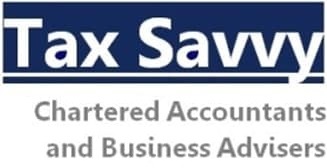Auto Enrolment
Get help with auto enrolment and workplace pensions. We help from start
to finish offering you a complete auto enrolment service, so you remain
compliant.

Fully Managed Workplace Pension Service

Meet Auto Enrolment Obligations

Personalised Support Remotely or Face-to-Face
Auto Enrolment and Workplace Pensions
Auto enrolment requires all employers in the UK to provide a workplace pension scheme for eligible members of staff. Even if your business only has one employee, you must automatically enrol them if they meet the qualifying criteria.
At TAX SAVVY we can help guide you through your legal obligations, advise on how best to set-up your structure, and manage the process on your behalf. Whether you are looking to set-up a pension scheme with Nest, or if you’d prefer to go with another pension provider, we can help assess your workers and complete any necessary integrations.
Once set-up, we can manage your workplace pension on an on-going basis, offering you a complete solution from start to finish and ensuring you remain compliant.

How TAX SAVVY takes the stress out of your auto enrolment obligations
- We can offer a complete auto enrolment service. From implementing a workplace pension scheme with your chosen pension provider to helping assess your staff eligibility and minimum contributions.
- Once your workplace pension scheme is set-up, we can automatically enrol all qualifying members of staff, and ensure you’re meeting your legal obligations
- Where applicable we can help with employees who opt-out of auto enrolment, and we can also liaise on your behalf with any non-eligible jobholders who wish to join
- We can help you fulfil you reporting duties to The Pensions Regulator, helping register your workplace pension scheme and meeting your obligations for providing the relevant information
We help you get in control, save money and save time
Schedule a free consultation to find out how we can help with your Auto Enrolment and Workplace Pensions, so you can make better decisions.


Who qualifies for auto enrolment?
Auto enrolment is available for all eligible employees, even if your business only has one employee. Qualifying criteria includes employees who:
- work in the UK
- are between the age of 22 and the state pension age
- earn more than £10,000 per year; and
- aren’t already in another qualifying workplace pension scheme
The earnings thresholds are updated every year by the Department for Work and Pensions (DWP) so please note they may be subject to change in a new tax year. You can see our graphic below which has the thresholds for the 2020/21 tax year.
Employees do also have the option to ‘opt-out’ of auto enrolment. For example, an employee may wish to have more control and flexibility over their pension and choose to invest in a self-invested personal pension (SIPP) instead.
From an employer’s perspective, you can put off auto enrolment for up to 3 months from when a new employee joins your company. Please note that if you choose to do delay, you will need to inform your new starter(s) in writing.

Who can opt in to auto enrolment?
As an employer, part of your legal responsibilities includes inviting staff, who haven’t been automatically enrolled, to opt into your workplace pension scheme.
Staff who then opt-in are entitled to their employer contributions to their pension pot.
Employees who aren’t invited to opt-in can request in writing to join your workplace pension. These employees are entitled to join, but your requirement as an employer to contribute to their pension pot is optional.
As an employer, the obligation lays with you to determine whether a member of staff should be automatically enrolled or has a right to opt-in, as well as managing staff that request to join.

How much are auto enrolment contributions?
As an employer, there is a minimum contribution you will need to pay based on each of your employees ‘qualifying earnings.
Your employer contributions will also depend on your chosen workplace pension scheme. As an employer, you have the choice of which pension scheme you wish to run.
Some companies also pay employees additional funds on top of the minimum contributions. Employers use this as an employee benefit to help with staff retention and to recruit new employees.
